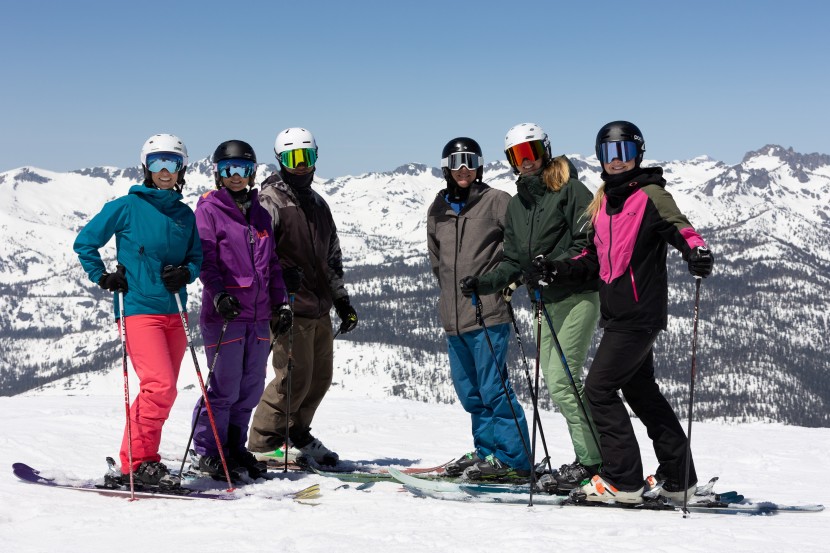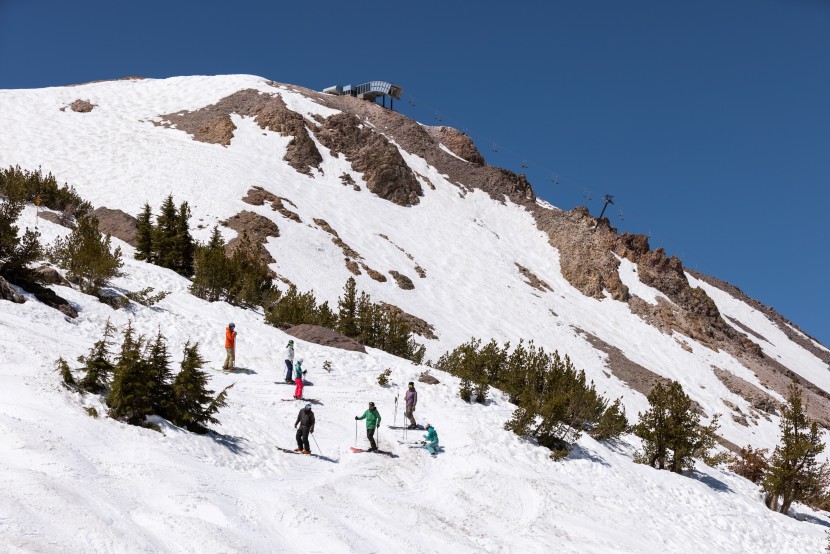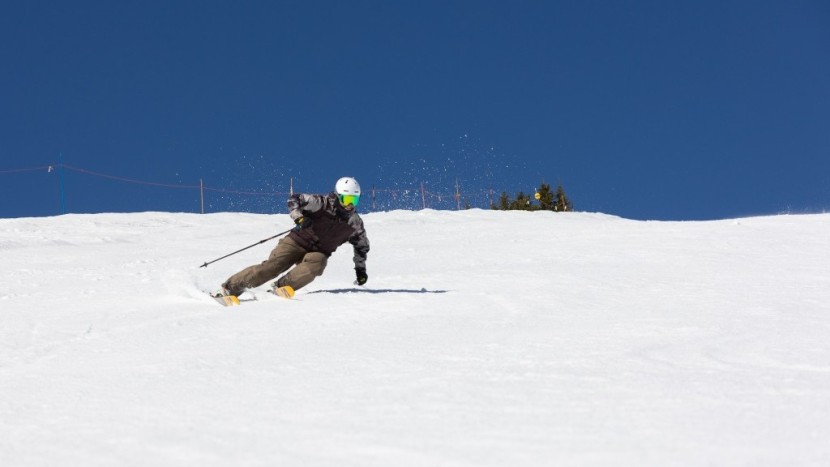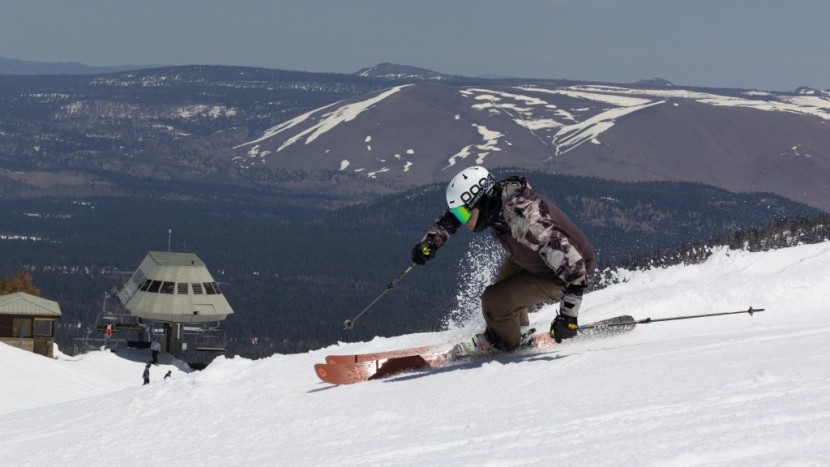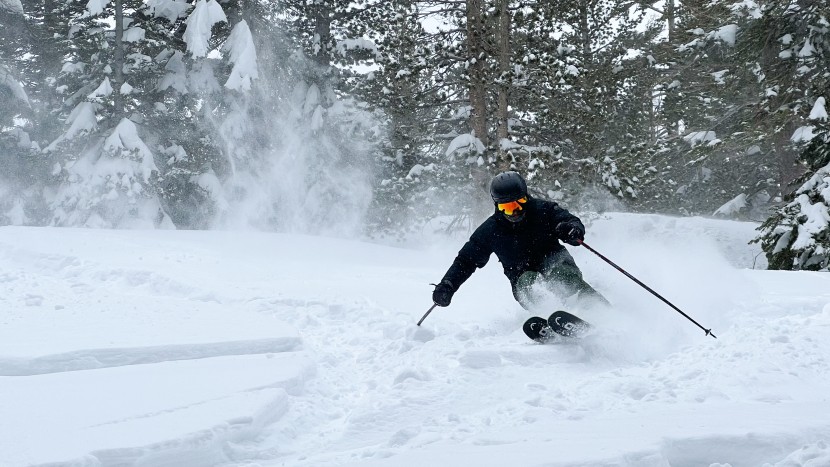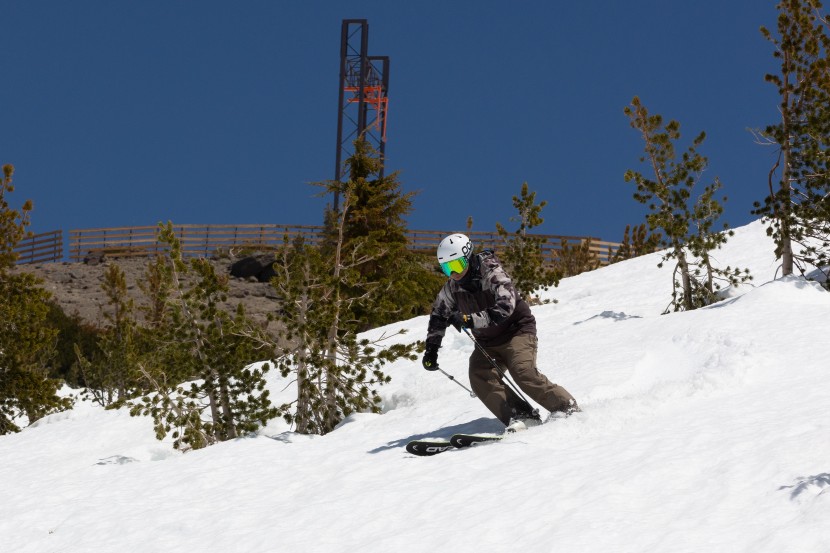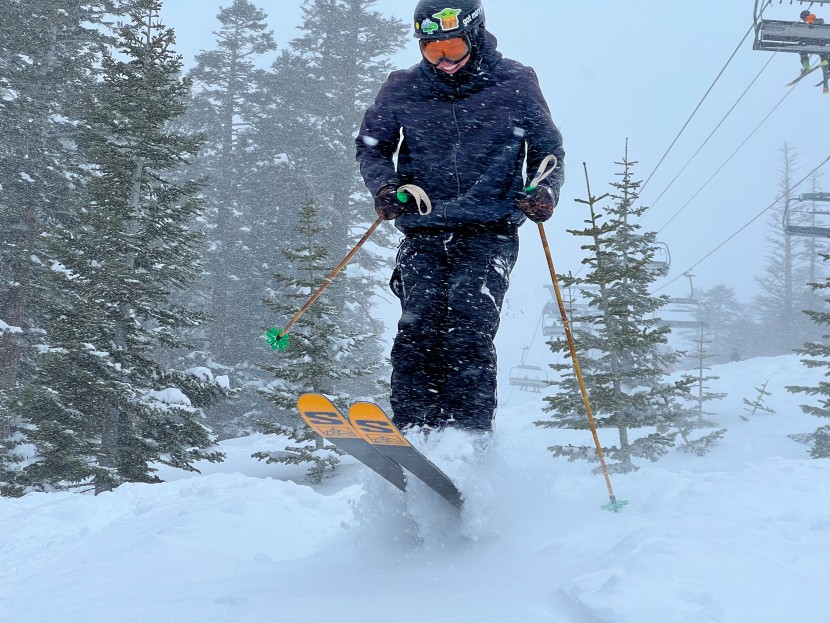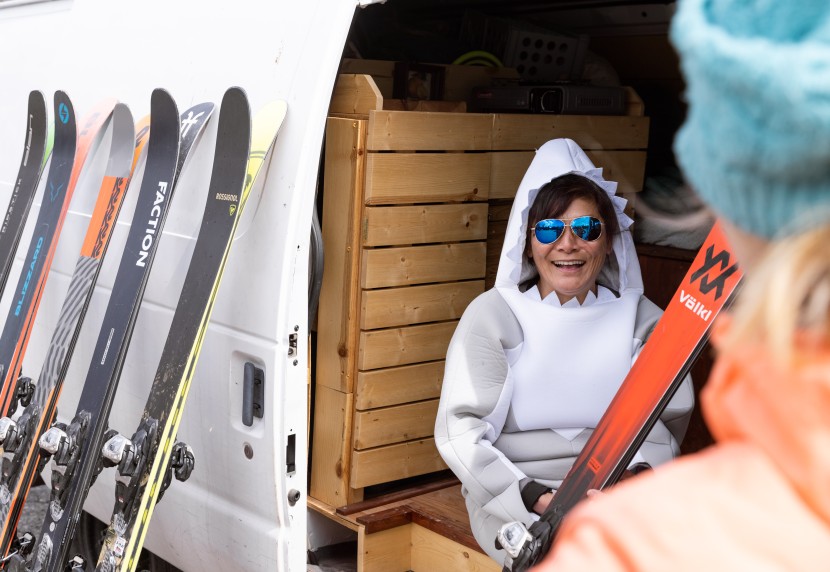To test all-mountain alpine skis, we compile data and observations from every condition and terrain type imaginable. While other reviews may note the performance of a model after only an afternoon of testing, this review examines each product over several weeks and months with numerous testers (and skier types) to bring you the best possible review. We hope to offer you the best advice possible so that you can worry less about what pair of skis is right and more about when the right time is to plan your next ski trip.
Product Selection and Preparation
We begin by extensively researching the market, noting what respected manufacturers offer in the all-mountain category, which skis are best sellers and popular with users, and what products have specs that seem to indicate versatile performance. We select products to test that are innovative, will perform well in their element, and are backed by a trusted manufacturer's pedigree.
We mount all of our selected test skis with the same binding, the Marker Griffon demo binding, which allows for enough adjustment for an entire team with different boot sizes to test the models. This binding sits close to the surface of the ski to provide a good feel of the ski itself and is burly enough to allow us to ski hard, huck rocks, and not worry about breaking it. Having the same binding on each pair allows us to evaluate each ski's performance without factoring in a difference in the bindings.
Note that we here at GearLab purchase all of these products on the retail market – just like you – and our reviewers will never accept any gifts, payments, or freebies from manufacturers.
Testing Metrics
To fairly measure all of these skis' strengths and weaknesses against each other, we first identify the capabilities of what makes for a great all-mountain ski. We then record a numeric score according to how well we think each ski performed in each metric. To maintain a consistent standard, we made sure to ski the same run or in similar snow conditions to score each ski within the following metrics equitably.
Stability at Speed
We grade each ski on a long blue or black groomed run for our first metric. We focus on high-speed, longer-radius turns to assess Stability at Speed. Any vibrations, chatter, or weird flex patterns are considered, as well as how well a ski inspires confidence in maintaining our balance and line.
Carving Ability
Our second testing metric tends to go hand-in-hand with Stability at Speed. Nevertheless, we take each ski out for another set of runs on firmer blue or black groomed terrain to test their Carving Ability. We focus on skiing short- and medium-radius turns and tune ourselves into each ski's edge-to-edge quickness, tail stiffness, and overall grip on hardpack snow.
Powder Performance
For Powder Performance, we focus less on the pitch of a run and more on how well each ski floats, how it changes in flex when submerged, and its overall stability moving through heavier snow – like the classically-known “Sierra Cement.” When completely submerged, skis can behave much differently, sometimes becoming squirrelly or bending less predictably. These are all factors that impact our Powder Performance score.
Crud Performance
We purposefully seek out debris fields, refrozen suncups, and the often treacherous “dust-on-crust” conditions to test out each ski's Crud Performance. We rate how each ski can maintain the desired turn shape through these challenging and variable conditions. We experiment with turn shapes and note any changes in vibration or flex pattern. It is also helpful to look back and directly compare these skis to how they performed on consistent, groomed terrain.
Terrain Playfulness
Although our final assessment is possibly the most subjective, we select runs and lines with a good mix of undulations, trees, and bumps. This process allows us to gather an overall feel for each ski's Terrain Playfulness throughout a whole run. We wanted to see how well any strengths we experienced while on-piste translated into off-piste.
Logistics of Testing
This all-mountain ski review seeks to show each product at its best. We focused on choosing the right terrain on the right days based on the conditions. For example, there were days when we utilized wind buff or thick slush to mimic other conditions that were unavailable. For some of the groomer tests, the ideal testing window only allowed us to take a few runs at a time. Under these circumstances, we made sure to test on consecutive days to limit as many variables as possible.
We performed our tests while instructing, training, ski patrolling, and freeskiing. We got out to ski in adverse conditions, which allowed us to push each model to the limit. We also lent the skis out to friends and colleagues of all sizes, abilities, and skiing styles. This additional feedback helped us gather as much input as possible on how – and under what conditions – these skis shine.
Logistics of Photography
Showing each ski in action on the hill is another story entirely. While we test these skis over months, capturing all of those moments in photographs can be difficult. Each of our photos is selected to help you visualize these skis in action on your average day; the photographs won't necessarily represent all of the terrain and conditions in which we tested.

